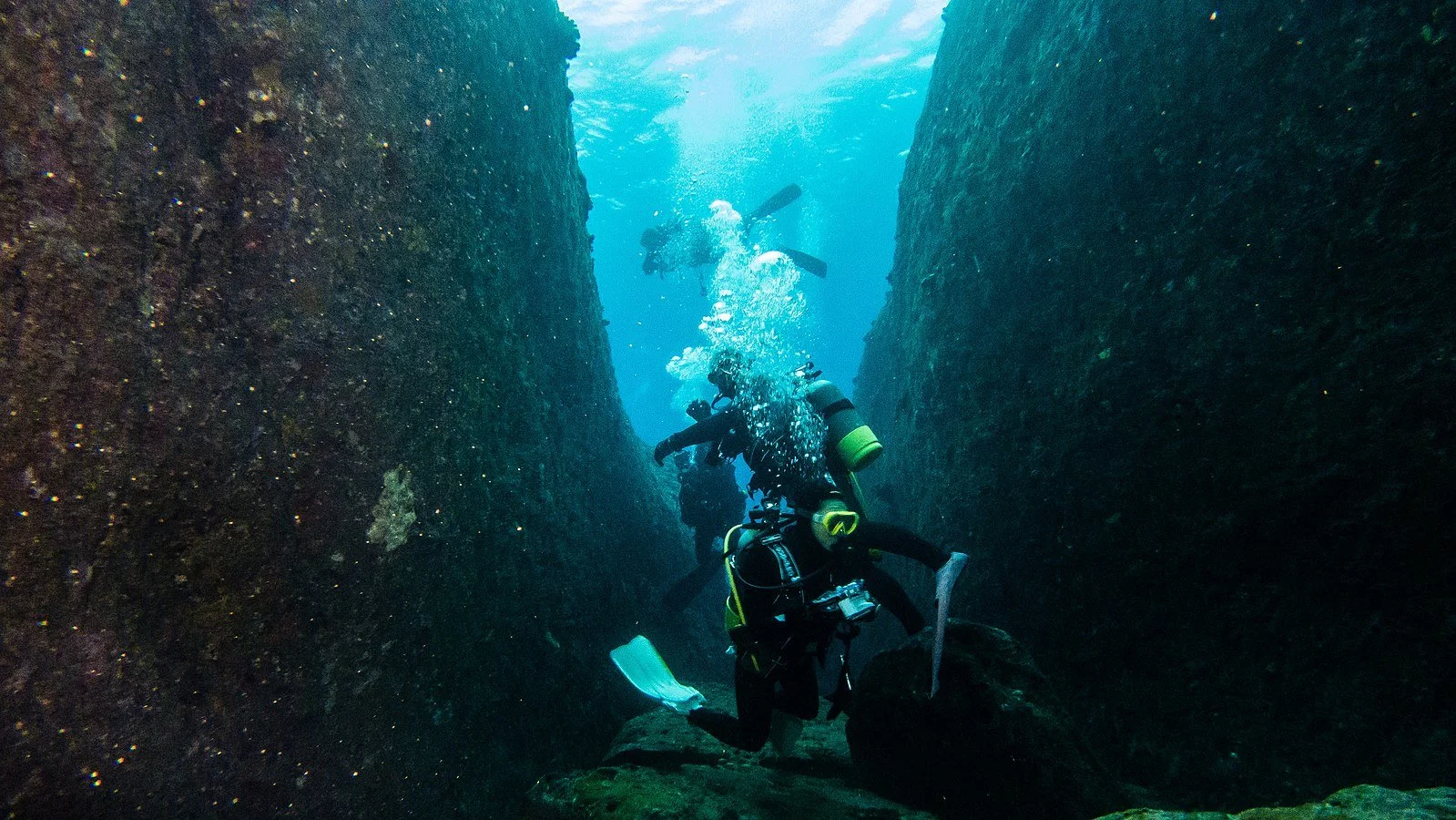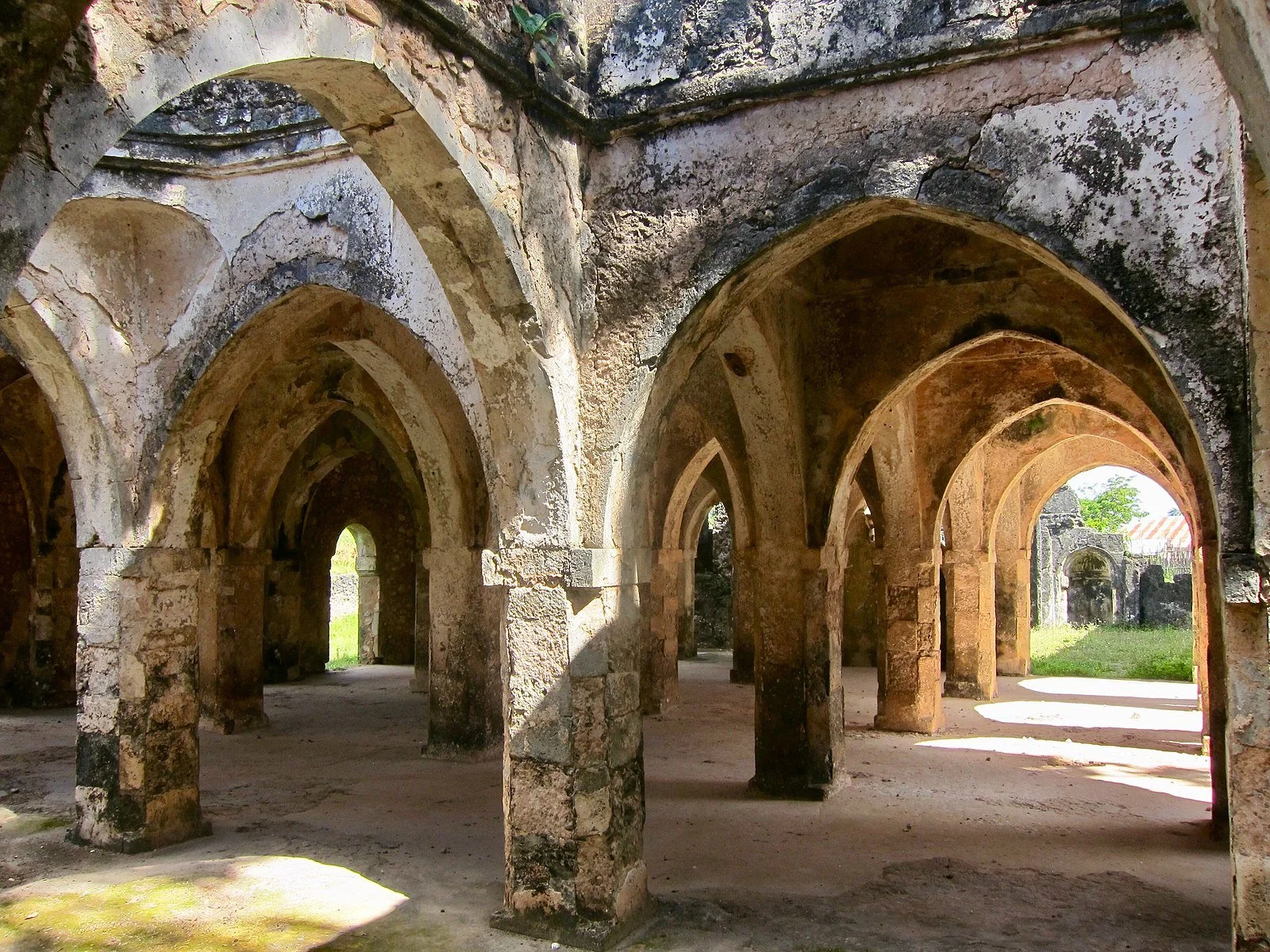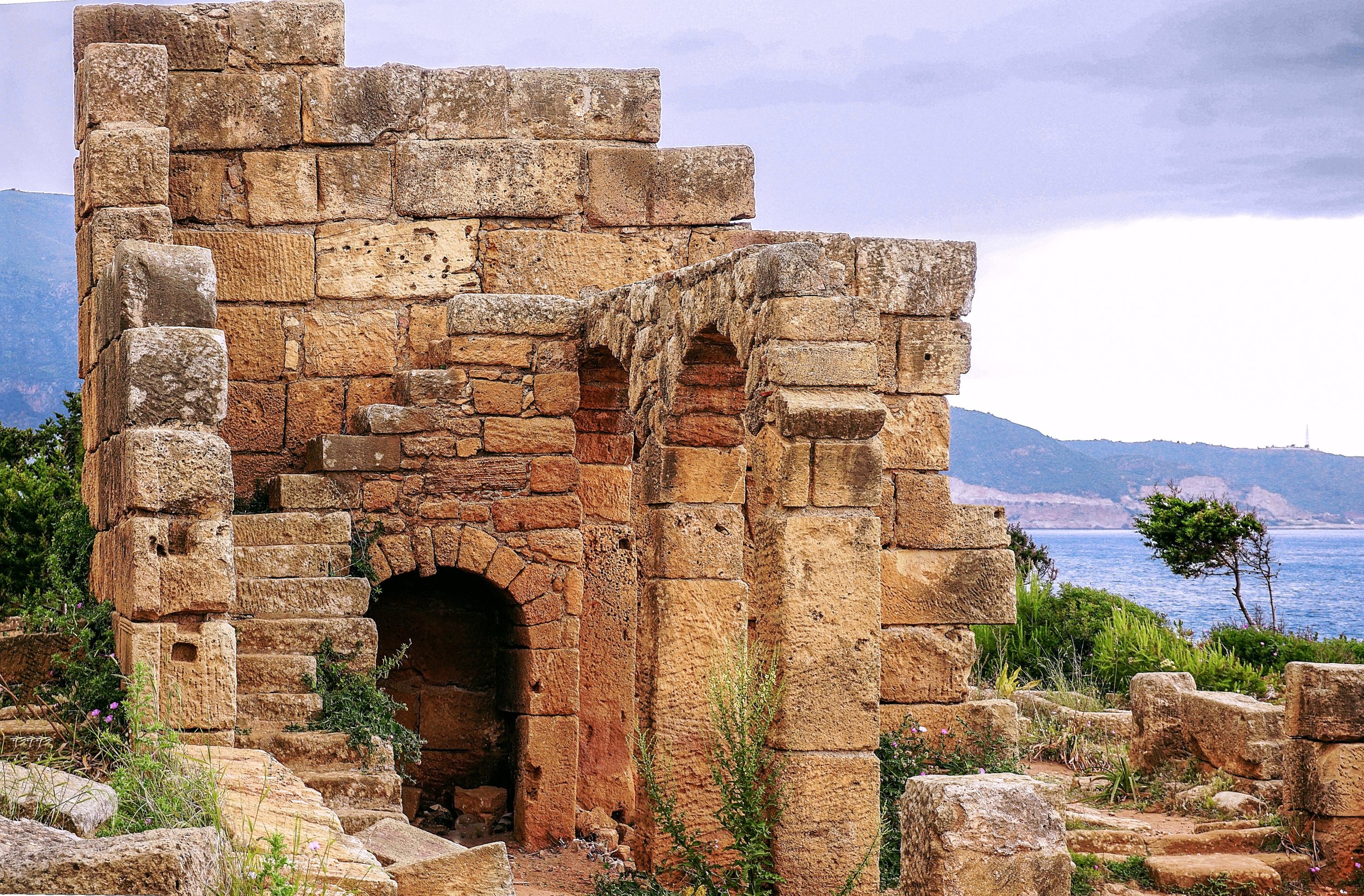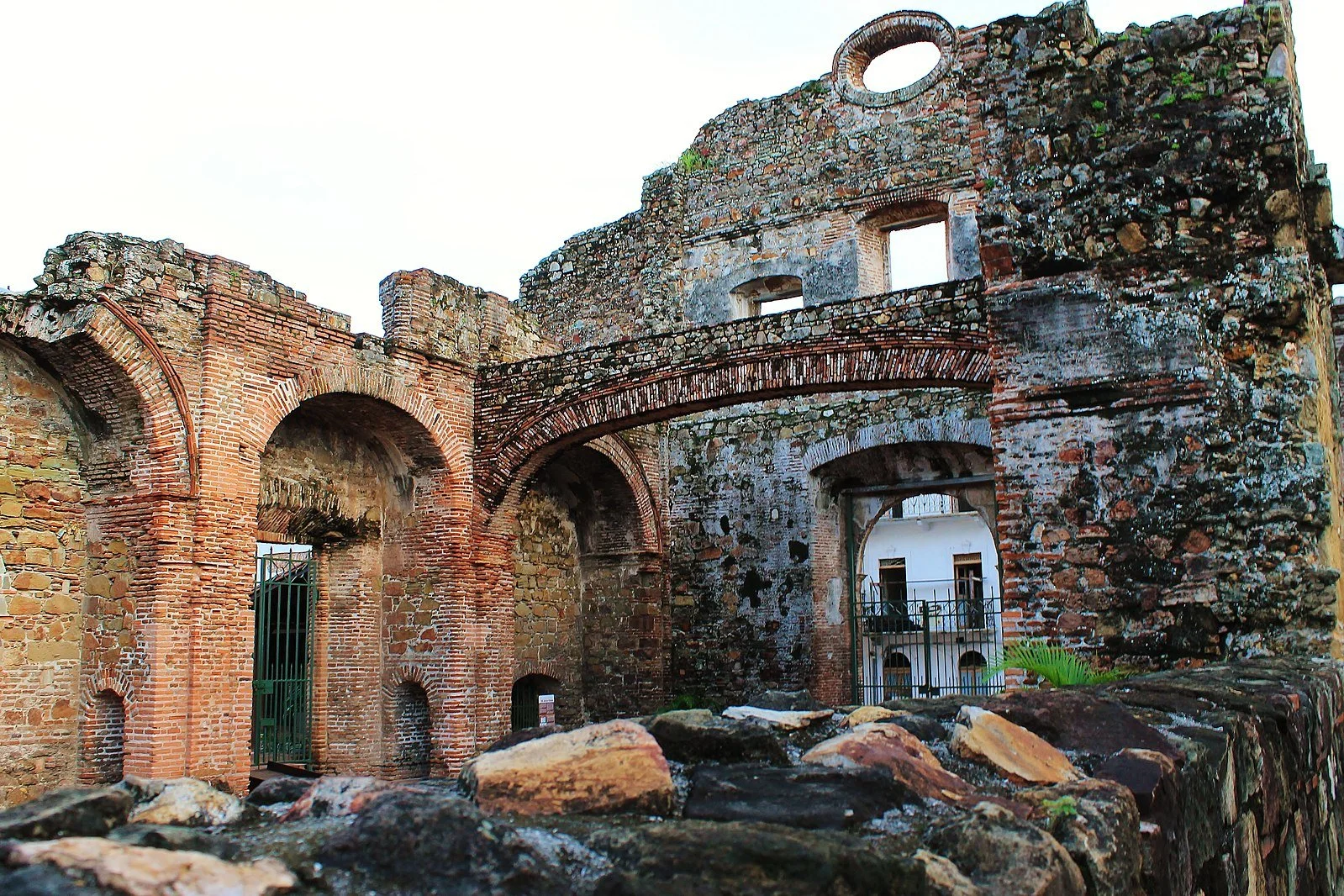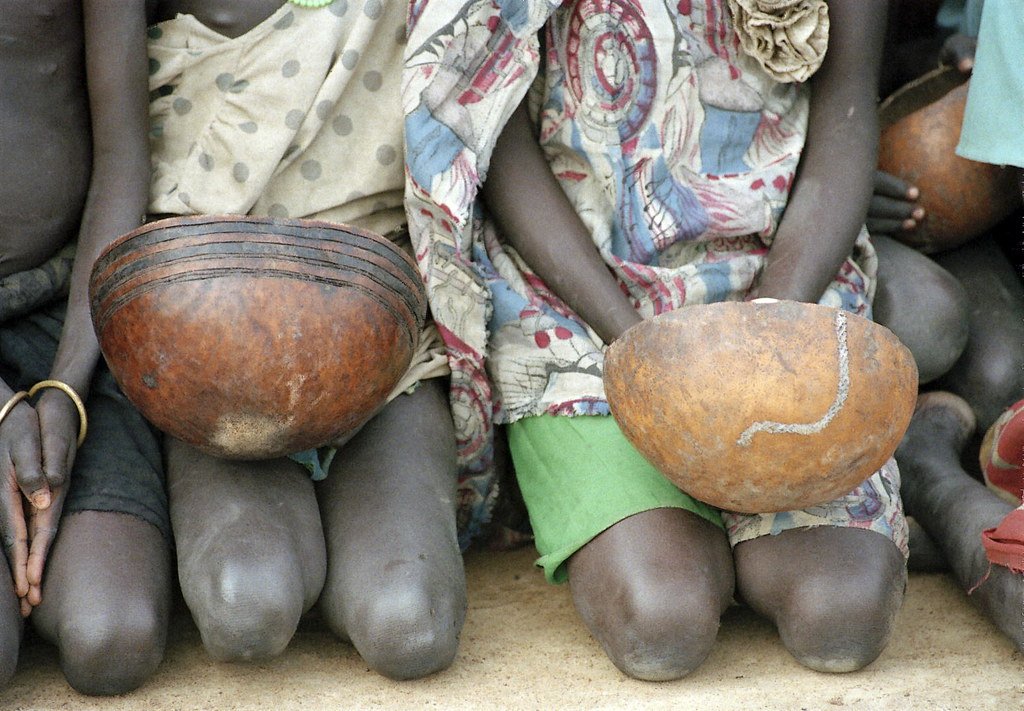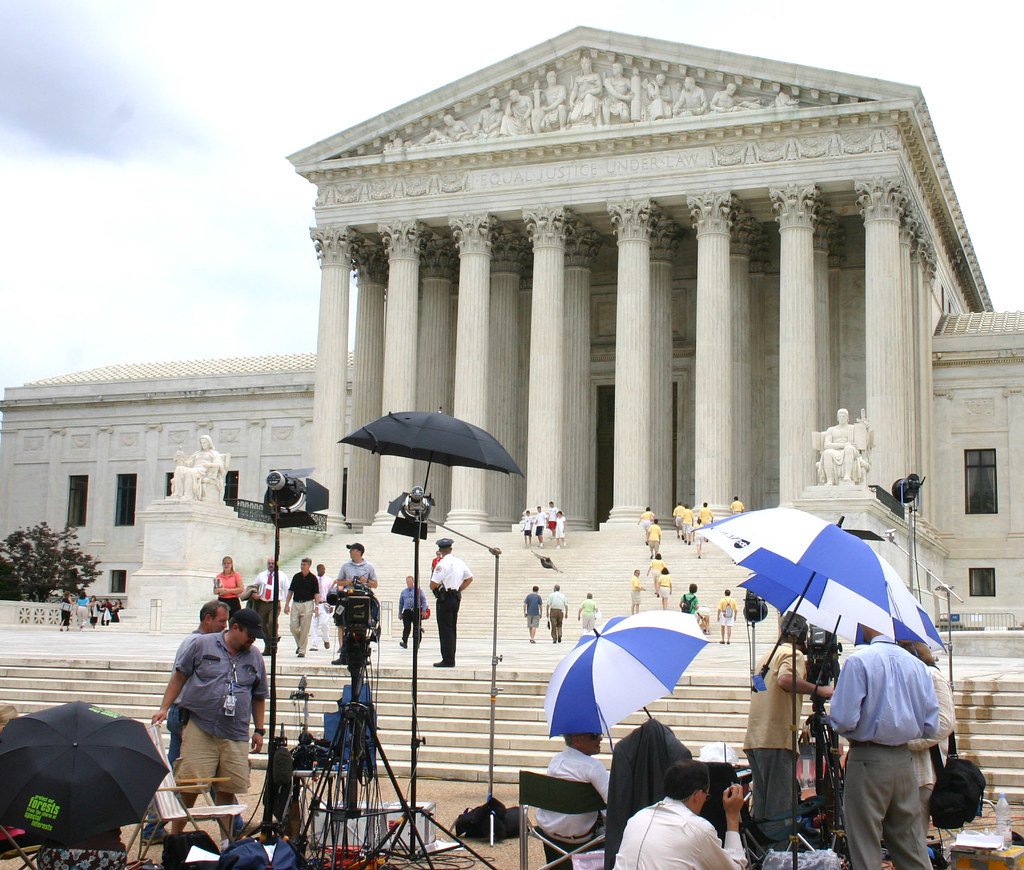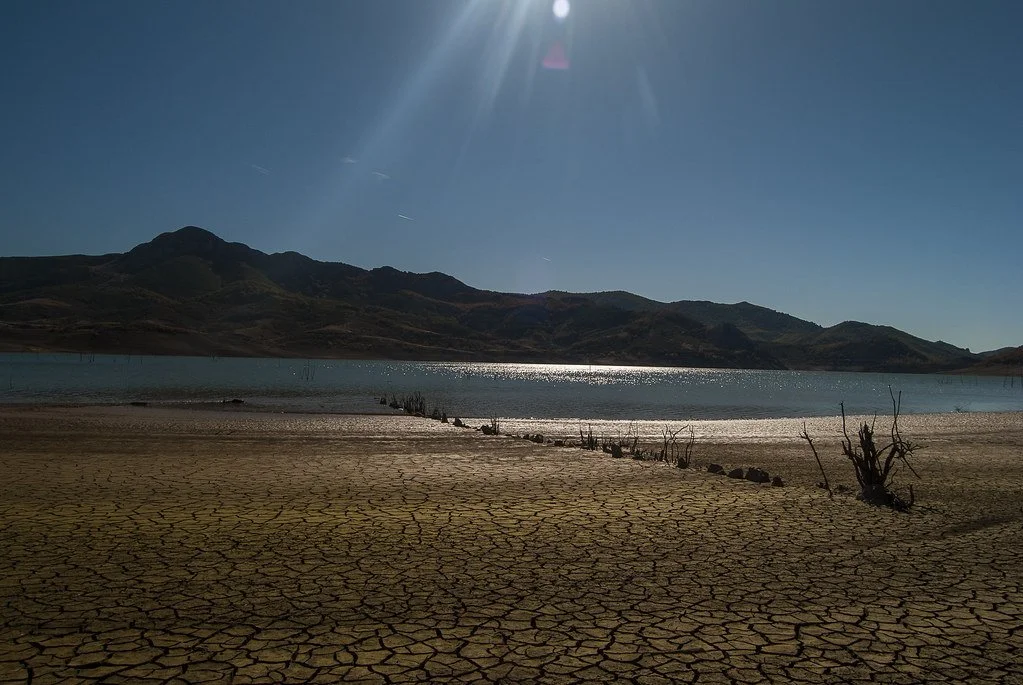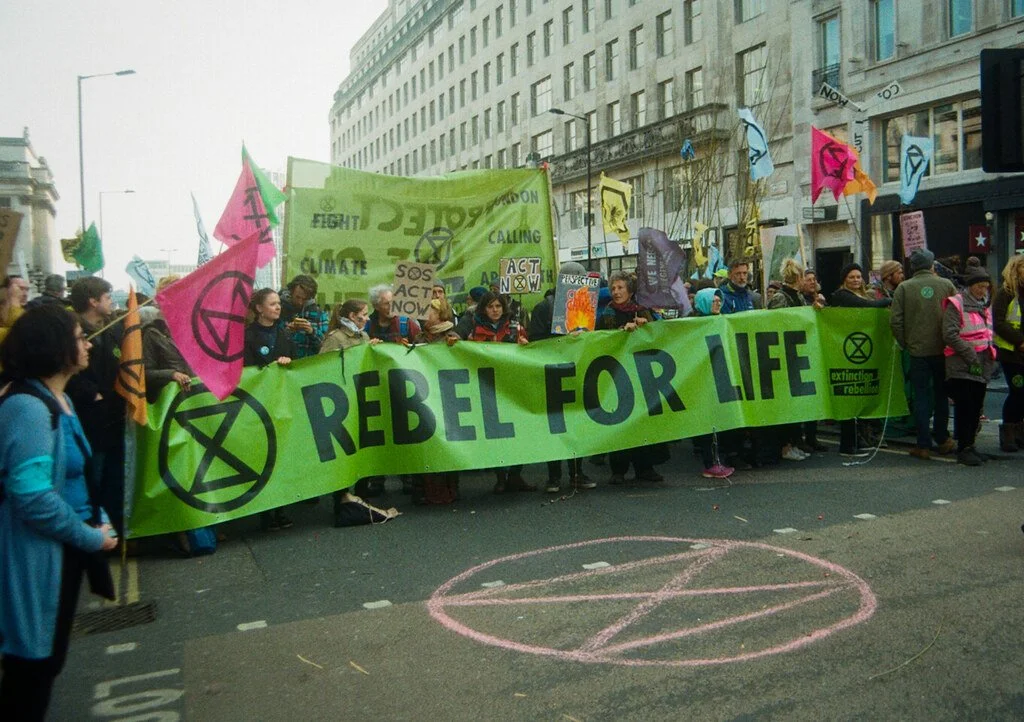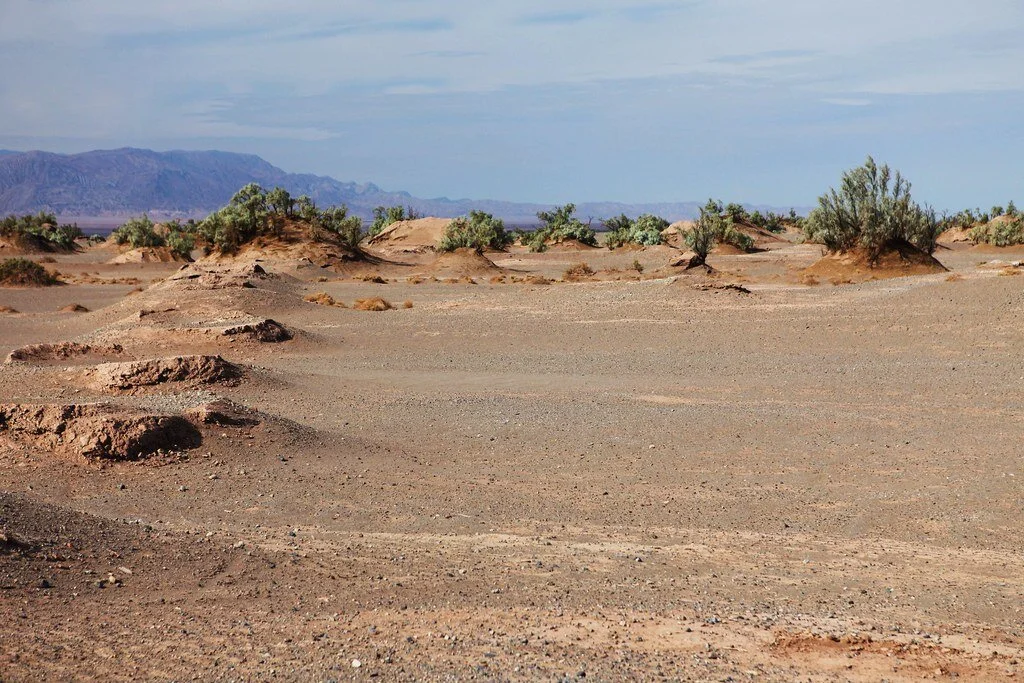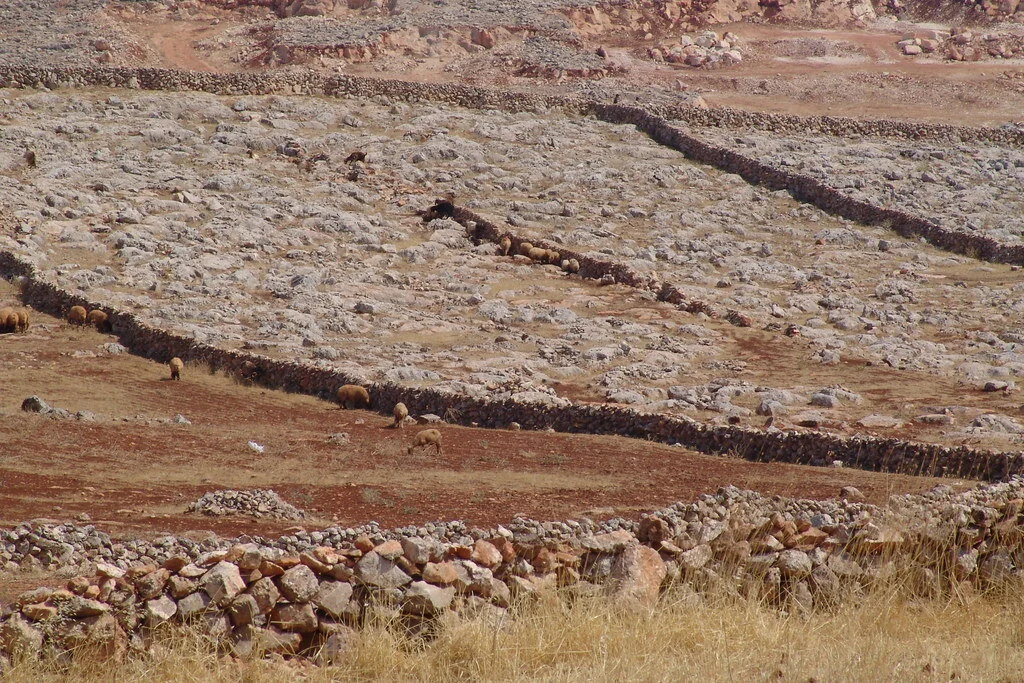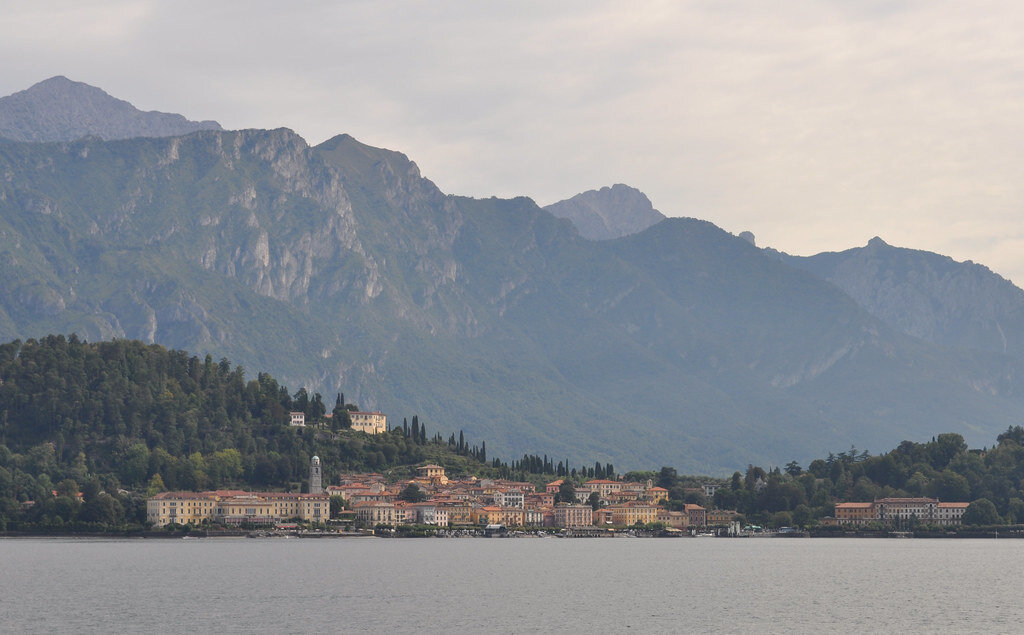Urban pollution strongly contributes to global warming and Zurich is working to lower the amount of pollutants it produces.
Read MoreReduce Your Carbon Footprint by Home Composting
Self made compost can take time to make, but it can easily lower someone’s carbon footprint.
Compost Pile. Lindsay. CC BY 2.0
Food waste is a major component of global warming, with all the methane that food produces in landfills when it rots. However, even if someone can’t finish all their food and have a little bit left, they can still lessen their food waste and overall carbon footprint in various ways like home composting. Since around ⅓ of the food produced in the entire world is wasted, composting organic waste can reduce roughly half of greenhouse gasses equivalent to carbon dioxide between 2020 to 2050. Composting is a process of turning organic waste into soil or mulch, and the compost that comes from it is nutrient rich and good for plants, so by composting, people can reduce their food waste and help plants grow.
For composting at home, there are multiple things to keep in mind before starting. The first is that composting is going to take a lot of time, with anywhere between six weeks to an entire year depending on the method, and how much effort is being put into making the compost. The second is that there are two types of items to compost, “green” and “brown” items. Green means the food scraps, grass clippings, coffee grounds and tea leaves that are full of nitrogen, while brown ones are the carbon-rich items, like cardboard, egg cartons, dried leaves and wood shavings. Since the green items tend to be “wetter”’ and the brown ones more “dries”, an equal mix is good, though some say it is better to have a 1:3 green to brown ratio. As long as the pieces in the mix aren’t extremely large, and there is good moisture and access to air and oxygen, the pile will decompose into compost. Turning the mix every few days will help bring in more oxygen to help the process and control the odor. The oxygen is especially important because without it, the food will still compost but in an anaerobic way, which will produce a gas that is half methane and half carbon dioxide. Methane traps radiation much better than carbon dioxide, so it contributes to global warming 25 times more per pound.
Fruit on Compost Pile. Allispossible. CC BY 2.0
There are multiple methods of composting at home, but the fastest way is to simply get a home composting bin. There are many composting bins available for sale, but it is also possible to make a homemade one. With a compost bin, all that is required is to place the waste inside and let it decompose at a faster rate than leaving it outside. Some bins will continuously compost materials, while others will make batches of it.
Though using a bin is the easiest method, it is possible to do home composting without one. It is a little slower since the heat isn’t contained, but it works just as well. Trench composting is a technique that involves digging a hole roughly a foot wide and deep, then filling it halfway with kitchen scraps and other organic food waste inside before covering it up. Creating a heap and layering the materials in it also works, though it is better with some space as it may attract flies as the food rots. But, it has access to air, and needs access to water, and within a few months, the compost pile will be ready. To speed up the process, it is possible to use worms or other accelerators.
Composting is a popular method around the world, especially among European countries. Germany has a high recycling and composting rate, sustainably getting rid of 65% of their waste as of 2019. Austria, Slovenia, Belgium and Taiwan also have recycling and composting rates higher than 50%. South Korea, however, recycles around 95% of its food waste by turning it into compost, animal feed, or biofuel. Their laws against sending food waste to landfills and having biodegradable food scrap bags that could be composted and compost bins for people to use have greatly added to this, as well as some places that track food waste per household and charge them for it.
To Get Involved
Many communities have composting programs that aim to advertise the benefits of composting and will help people do it. Even in large cities where people live in apartments and don’t have a backyard to compost in, there are organizations that will take in food waste and compost it for people. In New York City, the Department of Sanitation (DSNY) has multiple programs just like this, focused on composting, educating, and waste management. CompostNow is an organization that has community gardens and programs in multiple locations that will take in food waste to be composted. Ecoscraps is another company that collects food waste, recycles it, and then sells the resulting compost. Their compost is available all over the country in stores like Home Depot and Walmart.
To find out more about the DSNY, click here.
To find out more about CompostNow, click here.
To find out more about Ecoscraps, click here.
Katherine Lim
Katherine Lim is an undergraduate student at Vassar College studying English literature and Italian. She loves both reading and writing, and she hopes to pursue both in the future. With a passion for travel and nature, she wants to experience more of the world and everything it has to offer.
7 Historical Sites That Could Be Underwater by 2050
Climate change is threatening these beautiful archaeological sites, and at this rate, it may not be long before they are completely submerged under water.
The Yonaguni Monument is submerged off the coast of Japan. Danapit. CC BY 2.0.
One of the most immediate consequences of global warming is the rise in sea levels that is threatening to turn many cities into a modern day Atlantis. However, it is not just the common tourist destinations of Venice and Bali that are at risk—there are a number of breathtaking historical sites that could also disappear under the tides. Many of these destinations are located at or below sea level and are also near bodies of water, which makes them extremely vulnerable to flooding and water damage.
1. Elephanta Caves – Gharapuri, India
Elephanta Caves. Ashwin Kumar. CC BY-SA 2.0.
In 2014, the Elephanta Caves were identified as being at long-term risk from rising sea levels in the Indian Ocean in a study conducted by researchers at the University of Innsbruck. Located on Elephantine Island in Mumbai Harbor, the caves include a number of man-made excavations and carvings into the various rock faces of the island in honor of the Hindu god Shiva. These archaeological remains date back to the mid-fifth century, making the site almost 1,500 years old. Many of the cave entrances are adorned with detailed sculptures of Shiva, the most famous being “Sadashiva,” a bust of the god carved into the side of the mountain measuring seven meters in height. Every year, the few hundred islanders and a large tribe of monkeys welcome over a million tourists, despite local protests about how the visitors are endangering their way of life.
2. Great Mosque – Kilwa Kisiwani, Tanzania
Inside the Great Mosque of Kilwa. Lazy-papaya. CC BY-SA 2.0.
As the oldest standing mosque on the east coast of Africa, the Great Mosque of Kilwa Kisiwani has been around since the 14th century. The island on which it is located was a key trading port in the Indian Ocean and saw shipments of ivory and gold as well as upwards of 20,000 African slaves pass through on their way to Europe and North America. Sailors stopping by on their journeys could enter the halls and worship under the 16 coral and timber domes, built specifically with such materials to withstand the elements. The local sultan added an extension to the south side of the mosque in the 14th century, including the “Great Dome” which also boasts an inscription by Ibn Battuta, an explorer known commonly as the Islamic Marco Polo.
Because Kilwa Kisiwani is a coastal city, local experts have long been expressing concerns about the dangers of coastal erosion to the integrity of the historical ruins. Rising water levels in the Indian Ocean are threatening the UNESCO heritage site as well as disrupt the locals’ way of life.
3. Comalcalco – Tabasco, Mexico
Mayan ruins at Comalcalco, Tabasco. Dennis Jarvis. CC BY-SA 2.0.
The Mexican state of Tabasco sits on the coast of the Gulf of Mexico and experiences regular flooding. If sea levels continue to rise, the region and its incredible Mayan ruins could be completely submerged.
Aside from the temples, monuments and palaces typical of ancient Mayan ruins, the historical city of Comalcalco in Tabasco is also home to ancient cocoa farms and chocolate factories. Given its strategic location between the lush greenery that borders the Rio Seco, Comalcalco was an important trade center between the ports on the nearby coast and communities inland to the east. The city is also unique in that many of its buildings were constructed using kiln-fired bricks, which is why its name translates to “place of the clay griddles'' in Nahuatl. Many of these bricks are adorned with various glyphs and carvings of Mayan religious figures, making the site extremely valuable for archaeologists and a favorite of visiting tourists.
4. Gran Teatro Falla – Cadíz, Spain
The Gran Teatro Falla in the Old City of Cadíz, Spain. RG2. CC BY-SA 2.0.
The Gran Teatro Falla has stood as a prime example of neo-Mudejar architecture in the southwestern Spanish city of Cadíz since 1905. Named after famous Spanish composer Manuel de Falla, the red-brick building is affectionately known by locals as the “House of Colored Bricks” for its striking facade. The ceiling of the great hall is decorated with artist Felipe Abarzuza’s fresco of “El Paraíso” or Paradise, which was a new addition after the original Gran Teatro de Cádiz was destroyed in a fire in 1881. It took 21 years and three different architects for the new theater to be rebuilt, but it is still used to this day by various local groups throughout the year for theater, dance, music and film.
Unfortunately, Cadíz has also been identified as one of the Spanish cities that will be most negatively impacted by rising sea levels in the Mediterranean. This places the Gran Teatro, along with many other museums and historical monuments in the city, at risk of sinking.
5. Wat Mahathat – Ayutthaya, Thailand
Buddha statue at Wat Mahathat in Ayutthaya, Thailand. Uwe Schwarzbach. CC BY-NC-SA 2.0.
Thailand is among the many Southeast Asian countries that experiences a heavy monsoon season. Locals are used to seeing city streets completely submerged underwater between July and October every year. In 2011, the Buddhist University located at Wat Mahathat in the city of Ayutthaya experienced severe flooding as a result of the rains, and climate change’s effects on weather patterns continue to threaten the site.
This royal temple is believed to be one of the first built during the reign of the Ayutthaya Kingdom and includes various pagodas, a royal hall, numerous smaller temples for worship and a large sandstone bust of Buddha. It is a beautiful example of traditional Khmer architecture and also features ancient murals that extend across through the courtyards and chambers under groves of bodhi trees. The site is a popular destination for a large number of Buddhist pilgrims who journey across Southeast Asia each year to visit the oldest bell-shaped relic in the world, located in the center of the compound. At present, Wat Mahathat serves as the headquarters for Thailand’s largest monastic order, the Mahanikai school of Buddhism.
6. Roman Ruins – Tipaza, Algeria
The remains of a Roman temple at Tipaza. Rachid Benabdellah. CC BY-SA 2.0.
The northern Algerian village of Tipaza is known for its scattering of Roman, Byzantine, Phoenician and early Christian ruins. Given its coastal location, it was prone to conquest by various sea-faring groups as early as the 6th century BCE. Nestled among golden beaches and pine tree forests, there are still remnants of a Punic necropolis, a Roman amphitheater once used for gladiator fights, various religious complexes and even thermal baths. The most notable monument is a royal mausoleum where the sole daughter of Cleopatra and Mark Antony is buried with her husband. The ancient town center was also surrounded by a defensive wall constructed by the Romans, most of which was deconstructed so that its materials could be reused for building Algiers.
UNESCO has already identified the ruins at Tipaza as being at heightened risk from flooding and erosion. The probability it estimated is also supposed to triple by 2050 if water levels in the Mediterranean continue to rise at present rates.
7. Iglesia Santo Domingo – Panama City, Panama
The Arco Chato in the Church of Santo Domingo. Darena. CC BY-SA 2.0.
Rising water levels in the South Pacific, in addition to the heavy rains experienced by Panama during their annual wet season, are threatening many older neighborhoods and the historical buildings within. This will only worsen as climate change continues.
The Iglesia Santo Domingo is one of the most iconic buildings in the Casco Viejo neighborhood of Panama City. The church is most well known for the flat arch—“Arco Chato”—that stretched across its interior courtyard with no support from its construction from 1678-2003 when it finally fell but was soon rebuilt. Because the arch was able to withstand two centuries worth of earthquakes, Governor Antonio Fernández de Córdoba selected Panama over Nicaragua to be the site of the interoceanic canal—the famous Panama Canal. Ravaged by fire in 1756, the church has stood as an empty brick shell ever since. It now houses the Museum of Religious Colonial Art, which exhibits various Panamanian artifacts from the 16th century onwards.
Tanaya Vohra
Tanaya is an undergraduate student pursuing a major in Public Health at the University of Chicago. She's lived in Asia, Europe and North America and wants to share her love of travel and exploring new cultures through her writing.
How Climate Change and Political Unrest Created a Famine in Sudan
The war in Ukraine has drastically raised the price of food, worsening an already dire situation in Sudan.
Children in Bahr El Ghazal, Sudan wait for food from the World Food Programme. United Nations Photo. CC BY-NC-ND 2.0.
Famine was officially declared in Sudan more than five years ago, due to a variety of factors which range from climate change to political unrest. South Sudan was engaged in a civil war for roughly five years from 2013, which tragically left about 4,000 people dead and a staggering four million displaced and fleeing. While a ceasefire was reached in 2018, peace was rocky and sporadic attacks continued to make production nearly impossible for Sudanese farmers.
With famine being officially declared in 2017, the suffering still raged on in 2019, when extreme rain and flooding began to hit Sudan. The flooding continues in 2022, as the global political situation only makes matters worse in Sudan. The war between Ukraine and Russia has had an impact on Sudan in a number of ways. With over half of Sudan’s wheat being exported from the Black Sea region in Turkey, the war has caused food prices to skyrocket. Additionally, food aid programs are primarily focusing their efforts on Ukraine at the moment. While Ukraine clearly needs aid as well, Sudan has been all but abandoned and ignored in this dire moment due to global attention to other political conflicts.
What used to be a market in Thonyor, Sudan. DFID - UK Department for International Development. CC BY 2.0.
CBS News interviewed a Sudanese mother, Nyabany Kong, who reported not having eaten in two weeks. Like many others, she had to flee her home, which was subject to torrential floods that completely destroyed her farm. Kong has also lost her husband and her other child to this flooding and famine. Kong’s horrifying story is one of thousands.
Get Involved
Unfortunately, Sudan’s situation has been exacerbated severely by aid organizations lacking funds due to massive allocation to Ukraine. The best way to get involved is to donate to food relief organizations such as The World Food Programme, which is trying to get as much food as possible to Sudan, but simply doesn’t have the funds to do so. If monetary donations are not an option, simply spreading the word about the crisis and suffering in Sudan is also essential. Unfortunately, the western world often gets weary when spreading awareness, and suffering continues without any attention. The war in Ukraine has also required a lot of attention and money, which has drained Sudan of aid even more than before. Doing your own research about this conflict and then alerting the people in your life to the critical need in Sudan can also help organizations deliver the resources that are needed.
Calliana Leff
Calliana is currently an undergraduate student at Boston University majoring in English and minoring in psychology. She is passionate about sustainability and traveling in an ethical and respectful way. She hopes to continue her writing career and see more of the world after she graduates.
Dying By Fire: Wynn Bruce’s Environmental Protest
This past Earth Day, climate activist Wynn Bruce lit himself on fire on the steps of the Supreme Court, dying the following day. Set on demonstrating the importance of global warming, Bruce chose the world’s most radical form of protest to emphasize his commitment to martyrdom.
Steps of the Supreme Court. Dbking. CC BY 2.0.
On April 22, 2022, Wynn Bruce, a climate activist from Colorado, made a fateful and radical decision: he would go to the front of the Supreme Court and, using self-immolation, become a martyr for the fight for global-warming-related policy change. Fed up with the lack of commitment to the issue of climate change, Bruce seemed to feel this was the only way he could get United States policy makers to listen—by lighting himself on fire and dying for his cause.
Self-immolation is the most radical and rarest form of nonviolent protest. It is said by ABC to have “the ability to harness both the morality of nonviolent action with the visceral nature of violent action.” By Merriam-Webster's definition, it is the “deliberate and willing sacrifice of oneself often by fire.” Typically, protestors who choose this form of action will use flammable substances such as petrol and lighter fluid to make sure flames catch and spread across the body. The goal of this form of protest is not to live to see its impact, it's to sacrifice oneself as a martyr for a cause in order to stress the dire importance of certain issues.
Used now for decades to protest a variety of social issues, self-immolation has continued its way into the practices of the modern day protest. Wynn Bruce is just one example; a civil rights lawyer named David Buckle burned himself to death in 2018, also protesting climate change. Wynn Bruce, alongside being a son, climate activist and citizen of the world, was a Buddhist, which is the religion credited by many to have started the practice of self-immolation.
Self-immolation has been used across the globe and did not necessarily start as a form of active protest. Buddhists are commonly credited not only with self-immolation’s creation but also with the practice’s infamy. ABC explains that many Buddhists believed that the ability to renounce the body and “transcend[ing] it’s limitations” was when “perfection is reached.” In Buddhism, to transcend is to reach enlightenment—a state of compassion and one that also ends the cycle of rebirth—so often, self-immolation was done as a religious act and not as a form of protest.
Buddhists used self-immolation first as a form of religious ceremony, but then turned to its more aggressive usages during the Vietnam War. Thich Quang Duc, known as The Burning Monk, used self immolation to protest a massacre that was allowed by the Vietnamese government. The president of Vietnam at the time had laws in place that restricted religious practices of faiths other than Catholicism, which eventually led to the. In response to this outrage, Thich Quang Duc made an ultimate sacrifice; gathering nearly 350 monks and nuns, Thich Quang Duc sat cross legged in the lotus position as a peer poured petrol over his body and lit a flame. Thich Quang Duc remained perfectly still as his body caught fire. This was an act of protest heard around the world, and the imagery from the day was quickly iconized in canonical protest media.
Thich Quang Duc being covered in petrol. Manhhai. CC BY 2.0.
Because self-immolation has the power to so strongly influence those who hear of it, it is not surprising how fast the news of Thich Quang Duc’s sacrifice reached all areas of the globe. Published in magazines such as TIME and the Associated Press, the image circulated the globe and continues to be brought up in tribute articles and memorial pieces by publications.
The act of self-immolation hurts no one except the martyr involved. It attracts all the right media attention, and it emphasizes the threat of pressing social issues in such an extreme way that the world is forced to listen. Wynn Bruce seemed to know this, and his peers claimed to understand his motivations. Dr. Kritee Kanko, a Buddhist priest took to Twitter to write, “This act is not suicide. This is a deeply fearless act of compassion to bring attention to climate crisis.”
A statue of The Burning Monk. MK Photography. CC BY-NC-ND-2.0.
To Get Involved
MCE Cares is an organization designed to help people learn about how to become a climate activist. To learn more about the ways in which you can support the fight for policy change and climate activism, click here.
Ava Mamary
Ava is an undergraduate student at the University of Illinois, double majoring in English and Communications. At school, she Web Writes about music for a student-run radio station. She is also an avid backpacker, which is where her passion for travel and the outdoors comes from. She is very passionate about social justice issues, specifically those involving women’s rights, and is excited to write content about social action across the globe.
World Cup Controversy: Should Qatar Be Hosting FIFA 2022?
Ahead of the FIFA World Cup this November, Qatar has been the center of much controversy surrounding workers rights and the environmental impacts of their new stadiums.
The official ‘Adidas Telstar Mechta’ ball during the handover ceremony of the 2022 FIFA World Cup host mantle. Alneth. CC BY 2.0.
From high temperatures to Qatar's rather questionable human rights record, there has been a public outcry over FIFA’s refusal to remove the upcoming tournament from the Gulf state, despite issuing numerous vague statements that they were considering the change. There has been extensive controversy about why the second-biggest sporting event in the world after the Olympics should be held in a location which has outwardly expressed homophobic attitudes and in seven air-conditioned stadiums built by exploited migrant workers.
The criticism has all been exacerbated by the huge lack of viewer engagement the last time Qatar hosted such a major sporting event; stadiums during the 2019 World Athletics Championship were largely empty despite garnering a live viewership of 705,000 just two years prior. The economically unsustainability of the event—especially given that issues surrounding the rampant poverty and financial inequality in Qatar could have benefitted enormously from extra government funding and investment—have significantly lowered expectations for the upcoming World Cup.
A migrant worker cuts through a metal rod at a construction site for one of the football stadiums. ILO. CC BY-NC-ND 2.0.
The kafala labor system is a contractual form of labor sponsorship used in Qatar through which migrant workers are connected with a kafeel (sponsor) who manages their immigration status. Because the kafeel has ultimate authority over their workers, many of whom traveled from across Southeast Asia specifically for the construction of the stadiums, they face exploitation in the form of dangerous working conditions and insufficient wages. Increased international attention has pressured the Qatari government into passing various reforms to the system, but such changes to policy rarely come into effect in a timely manner.
Another major point of controversy has centered around the negative environmental impacts of constructing indoor, air-conditioned stadiums in the middle of the desert. On November 26, Qatar unveiled Stadium 974 to eager fans, a venue named for the number of recycled shipping containers used to construct the stadium. Despite FIFA’s extensive praise of this project, they have been accused of using it as a greenwashing exercise to divert attention away from the fact that Qatar’s climate necessitates the other seven stadiums to be artificially cooled. This will increase the country’s carbon footprint, which is already amongst the highest in the world due to its largely oil-based economy. Many critics have compared this to the backlash China received for using so much artificial snow when hosting the Winter Olympics in 2022. Environmental experts strongly believed that such environmentally harmful measures could have been avoided if the host nation chosen simply had a more suitable climate for the event, an argument they have extended to the upcoming World Cup as well.
Renovation of the Khalifa International Stadium in Doha. jbdodane. CC BY-NC 2.0.
While this is definitely not the first time a World Cup has been placed under such public scrutiny, previous controversies did not receive as much publicity as those in Qatar have. It begs the question of whether this is just because social consciousness is increasing in general or whether it has to do with the event being held in the Middle East—a longtime target of Western media. Either way, there is still a lot for FIFA and the Qatari government to address ahead of kickoff in November.
RELATED CONTENT:
A World Cup for the Overlooked
VIDEO: Dirt Court Dreams
PODCAST: Bringing Sports Coaching and Ubuntu to Zimbabwe with Mark Crandall
Tanaya Vohra
Tanaya is an undergraduate student pursuing a major in Public Health at the University of Chicago. She's lived in Asia, Europe and North America and wants to share her love of travel and exploring new cultures through her writing.
Floods, Drought, and Famine: The Story of Climate Refugees
Due to the climate crisis, millions will be forced to migrate to escape natural disasters. However, the current legal framework surrounding refugees does not account for these climate refugees, raising questions about the future.
Flood Emergency Response in Pakistan. Asian Development Bank. CC 2.0
Kiribati is sinking. Due to rising sea levels exacerbated by climate change, it is estimated that the small Pacific island nation will be underwater by 2100. This poses an immense threat to Kiribati’s 114,189 citizens, many of whom are at the risk of losing their homes and livelihoods to the rapidly rising seas.
Kiribati is not alone; many countries across the world are facing climate-related hardships such as drought, flooding, rising seas and increased hurricane frequency. The Institute for Economics and Peace estimates climate change may displace 1.2 billion people by 2050, mostly in developing nations ill-equipped to deal with natural disasters. This issue of climate change-induced displacement has led to the creation of a new type of refugee: the climate refugee.
The term “refugee” typically conjures up an image of someone fleeing sudden violence or persecution, not comparatively gradual changes in the climate. This is reflected in the language of the UN’s 1951 Refugee Convention, which defines a refugee as “someone who is unable or unwilling to return to their country of origin owing to a well-founded fear of being persecuted for reasons of race, religion, nationality, membership of a particular social group, or political opinion.” Climate refugees are currently not afforded any legal protections by the United Nations, and the agency argues the current definition of refugee is sufficient. However, the dramatic rise in the number of people displaced due to environmental reasons has led to calls for climate refugees to be afforded full refugee status under international law.
In 2015, Kiribati citizen Ioane Teitiota sued the government of New Zealand to become the first climate refugee. Teitiota argued he had lost his house to the sea, salt water had flooded his lands, and therefore by deporting him back to Kiribati, the New Zealand government was effectively dooming his family to poverty and instability. Teitiota’s argument was rejected on the grounds that he did not fit the criteria of a refugee under the 1951 Convention, and that changes in the climate did not pose an imminent danger.
The case of Ioane Teitiota and Kiribati raises questions that wealthy countries such as New Zealand will increasingly be forced to deal with. One question is that of equity; what does the Global North, responsible for 72% of historical emissions, owe to the people of the Global South who will bear the brunt of climate change related displacement? Extreme heat waves in India, flooding in Senegal and drought in Guatemala have already sent waves of migrants searching for a more hospitable environment. However, since current international law lacks a sufficient mechanism to support climate refugees, many will be turned away as Teitiota was.
To Get Involved
As climate patterns continue to become more extreme, millions will be displaced from their homes and forced to change their way of life. Climate Refugees is an organization that seeks to support climate refugees through advocacy aimed at shaping policy. The Environmental Justice Foundation fights for legal protections for climate refugees while also pressuring governments to reduce their emissions. The International Organization for Migration seeks to provide humanitarian aid to refugees while working with governments to facilitate cooperation on climate-related issues.
Ronan Morrill
Ronan is a sophomore at the University of California Berkeley studying history. He is an associate editor of Clio's Scroll, Berkeley's undergraduate history journal, and rows for the Cal Lightweight Crew team. He loves hiking and exploring the outdoors and is passionate about protecting the environment and preserving outdoor spaces. In his spare time he enjoys reading, running, and hanging out with his dogs.
10 Lifestyle Changes You Can Make to Help the Planet
CATALYST’s list provides travelers and activists inspired methods of adopting more environmentally friendly ways of living every day.
Read MoreDrought, Agriculture and the Water Crisis in Spain
In Spain, where drought and agricultural contaminants are affecting drinking water, the precious resource has become a rarity.
The drought’s effects on water in Spain. Oscar F. Hevia. CC BY-NC-ND 2.0.
After one of the driest winters of the past 20 years, Spain is experiencing record-low levels of water, which has severely impacted the country’s people. Spain collects the majority of its water through reservoirs and basins, which capture groundwater and rain. At this time of year, these reservoirs are typically at 70 percent. However, due to the drought Spain is currently experiencing, such reservoirs and basins are only at about 40 percent capacity—a palpable cause for concern for all Spanish citizens.
Due to the severe lack of water, Spain has placed regulations on what the limited supply should be used for. Pools remain unfilled as the weather gets hotter, city fountains are shut off, and villagers in towns closer to the interior of the country find it hard to get a sustainable supply of drinkable water. Villagers from interior areas of Spain, like Lastras de Cuéllar, depend heavily on bottled water sold in their town square. But the purchasing of bottled water is not a sustainable solution to the current water crisis. Older members of the community struggle to carry enough back home, and although many places discount their prices, bottled water is not cost effective. As summer approaches, the people of Spain worry about how long their reserves will last them and hope for heavier rainfall in the spring months to come.
The drought is being credited to climate change, and the ever-rising temperatures felt across the globe are now creating drastic impacts on the ways people will have to start managing their resources. Calls for water-management reform have begun from many scientists in Spain, the main argument being that due to rising temperatures, old ways of managing and transporting drinking water may need to change. Interior towns of the country that heavily depend on rain water to sustain them may have to rethink their system all together.
Park fountain without water. Ell Brown. CC BY-NC-SA 2.0.
On top of the drought, agricultural contaminants have threatened what little water resources Spain has left. Spain is a global leader in pork production, a process that actively affects groundwater resources commonly collected in the basins used to hold drinking water. Pig manure is loaded with toxins that make drinking this groundwater very dangerous. Wired Magazine explains that “pig feed is high in a chemical called phytate, which swine excrete as phosphorus.” When farmers use pig manure to fertilize their land, “phosphorus can become concentrated in the soil and leach to groundwater.” This concentrated phosphorus in groundwater can make humans extremely sick, another reason why clean water has become so rare in Spain.
Besides phosphorus, pig manure also secretes nitrates, something also commonly found in fertilizers used in the agricultural production of crops. Therefore, on top of the dangerous toxins found in pig manure, the nitrates in fertilizer are also seeping into groundwater and impacting the purity of Spain’s limited drinking water. The Local, an online magazine dedicated to covering news in European countries, states that “22 percent of Spain’s overall surface area…is exposed to nitrate pollution,” a startling statistic, considering Spain’s clean water crisis.
The implications of the drought—combined with the continuation of agricultural contaminants that are consistently finding their way into Spain’s drinking water—are extremely severe. If Spain doesn’t experience a spring with heavy rainfall, this issue may turn into a crisis. Spain has been for many years a water-insecure region, but as the effects of climate change excellerate and agricultural production continues to pollute the land, the issue only becomes more dire. For now, Spaniards can only hope for rain to counter the drought, and for water-management reform to make their drinking water safer. With those hopes in mind, they wait to see what the impending summer heat will mean for their depleted clean water supply.
To Get Involved:
The Organization for Economic Co-operation and Development (OECD) is an organization designed to assist economic and trade progress on a global scale. Learn about the OECD’s assessment of how water resources in Spain are allocated and how the OECD recommends to improve such allocations as conditions in Spain change here.
Circle of Blue is a non-profit organization dedicated to discussing critical research and the challenges involved with global water insecurity. Uniting journalism and data literacy, Circle of Blue serves to educate readers on global issues linked to water and provide research on ways others can get involved to fight global water insecurity. Learn more on how to eliminate global water insecurity here.
Ava Mamary
Ava is an undergraduate student at the University of Illinois, double majoring in English and Communications. At school, she Web Writes about music for a student-run radio station. She is also an avid backpacker, which is where her passion for travel and the outdoors comes from. She is very passionate about social justice issues, specifically those involving women’s rights, and is excited to write content about social action across the globe.
How to Debate the Climate Change Skeptics in Your Life
With many climate skeptics, it’s important to know how to respond to the claims from those who don’t believe in human-induced climate.
Climate change protest in Nuremberg. Markus Spiske. Unsplash.
Climate change refers to the current unprecedented warming of the climate that the Earth is experiencing. There are many skeptics who don’t believe the planet’s warming is of concern or that humanity is the main driver. These skeptics have a few main points they like to bring up. Here’s how to hit back.
“The Earth’s climate has always been changing, so there’s no reason we need to be worried now.”
Though the first part of this claim is correct (Earth’s climate has always been in flux), this is most certainly not a reason to be unconcerned about the current warming our planet is experiencing. Though the climate has changed a lot throughout Earth’s history, the planet hasn’t experienced such rapid warming in at least the last 2,000 years as it is currently. To respond to this type of statement, the key is referencing the unprecedented rate of warming as the reason modern climate change is a huge problem that needs to be addressed immediately. For specific credible evidence, one can draw from the reports made by the Intergovernmental Panel on Climate Change (IPCC), which is a body of the United Nations that conducts and disseminates scientific studies on modern climate change. In the Summary for Policymakers of the IPCC’s Sixth Assessment Report, it was reported that humans have caused the Earth to warm by an estimated 1.07 C since the Industrial Revolution. Comparing this temperature anomaly to ones before the mid 1800s shows us “human influence has warmed the climate at a rate that is unprecedented.”
“The Earth has been much warmer in the past than it is today, so we don’t need to be worried that it’s getting warmer.”
Again, the first part of this claim is true; we are actually currently in what is called an icehouse period, meaning we are experiencing a colder phase relative to Earth’s entire history. Though our current climate isn’t abnormally warm compared to all of Earth’s history, it is not only warming unusually fast, but it also poses dangers to humans, animals and many ecosystems, which are adapted to Earth’s current climate—not a warmer one. In response to these statements, it’s important to remind those in the conversation that we aren’t physically or fiscally able to adapt ourselves, our ecosystems and our industries to a warmer climate fast enough because of the unprecedented speed at which the climate is changing.
“The sun is the source of the Earth’s heat, so any change in the Earth’s temperature must be due to changes in solar radiation, not human activities.”
This type of statement is generally made by those who admit the Earth is warming quickly but don’t believe humans are the cause. The Earth is heated by the sun through solar radiation. However, if the sun was the only factor in warming our planet, the Earth would be too cold for us to survive on it. To respond to this kind of claim, you should remind whomever that our atmosphere is largely responsible for the warmness of our planet because the greenhouse gases in the atmosphere trap heat. A skeptic may then ask how we know humans have caused greenhouse gases to increase. Human-caused warming can be illustrated through graphs of the global average surface temperature, which show a continued increase in temperature since the Industrial Revolution (when humans began to emit large amounts of greenhouse gases by burning fossil fuels for energy). Countering this claim can be done by looking at any graph of global average temperature in the last century, as these graphs show the increase in the Earth’s temperature has very closely followed the increase in the human activities of fossil fuel burning, deforestation, and other greenhouse gas emitting actions. Also, it wouldn’t hurt to note the IPCC has reported “it is unequivocal that human influence has warmed the atmosphere, ocean and land.”
Whether writing about modern climate change or having a casual discussion about it amongst friends, it’s important to not only be aware of the fact that our climate is getting warmer at an unprecedented rate, but also to understand why the large majority of the scientific community is certain humans are the main reason why. Knowing this information can help you discuss and explain global warming and the importance of taking immediate action.
Jordan Hunt
Jordan Hunt is an undergraduate student at UC San Diego. She is majoring in Communication and is on track to earn her BA degree in the Spring of 2023. With an ever-growing passion for filmmaking and a strong desire to effect change in environmental policymaking, she loves to share her ideas and knowledge with others through writing.
7 Climate Activists Under Age 25
While Greta Thunberg may be the most well-known young climate activist, here are 6 more from around the world. India, the Philippines, Scotland, Uganda, Argentina and Mexico are all home to climate leaders under age 25.
Read MoreSpanish Statue Prompts International Discussion about Climate Equity
Mexican artist Rubén Orozco Loza’s latest installation of a drowning woman in Bilbao, Spain, incites international discussions of intergenerational equity in climate litigation.
Bihar. Rubén Orozco. CC BY 1.0.
Since appearing in the water of Bilbao’s River Nervión unannounced, an eerie statue of a drowning girl has mystified the people of the Spanish city. The figure was taken by boat in the middle of the night on Sept. 23 and placed quietly in the water. When residents awoke the following day, they were startled to see a young woman’s face partially submerged with her eyes and mouth tilted up, reaching for air. The piece has inspired international discussions about intergenerational equity and climate change. This issue is a big topic among European youth who, in recent years, organized school walkouts and protests.
Despite her passive expression, viewers have described the image to invoke different feelings as the tides rise and fall. A visitor viewing the statue, Triana Gil, told Reuters that “At first it gave me a feeling of stress when more of the face was out of the water, but now to me she communicates sadness, a lot of sadness … She doesn't even look worried, it’s as if she is letting herself drown.”
Rubén Orozco Loza, a hyperrealist artist from Mexico, created the sculpture. The installation, commissioned by the BBK Foundation, is titled “Bihar: Choosing Tomorrow.” In an email to Insider, Loza described the piece as “a reflection on the decisions we make for future generations.” The artist told the Spanish news site, Nius, that the goal of his work is for people to consider that “their actions can sink us or keep us afloat.”
With the help of his wife, Loza spent three months completing the piece in Mexico. The artwork is over 6.5 feet tall and weighs around 3.5 tons. It had to be flown to Spain in eight separate pieces and re-assembled there before it was brought to the river by boat.
The young girl stands still as tides rise past her ears and over her head, then slowly back down, unveiling her upward staring eyes and calm expression. This cycle repeats over and over, day after day. Her presence isn’t just unsettling residents but inspiring discussions around an uneasy topic that affects the global population: climate change.
A few days before the statue’s grand appearance in the river, the Science Journal published a report about intergenerational inequalities in exposure to extreme climate events. The paper found that children born in 2020 will experience up to seven times more extreme climate events like heat waves, wildfires, droughts, floods, hurricanes and tsunamis than someone born 40 years ago. This raises the important issue of intergenerational equity in climate litigation, which has fueled recent climate protests led by millions of young people in at least 110 countries in the last few years.
Loza told Insider that “‘Bihar: Choosing Tomorrow’ is an exercise in pausing, looking at what's changing, and above all, a future reflection of what can happen if we continue to bet on unsustainable models.” His artwork serves as a medium to contemplate the question of how future generations will experience a world impacted by the actions of people today. Loza added, “I hope that this piece helps people reflect and see how, like the sculpture, we can get to a point where we are no longer afloat.”
Claire Redden
Claire is a freelance journalist from Chicago, where she received her Bachelor’s of Communications from the University of Illinois. While living and studying in Paris, Claire wrote for the magazine, Toute La Culture. As a freelancer she contributes to travel guides for the up and coming brand, Thalby. She plans to take her skills to London, where she’ll pursue her Master’s of Arts and Lifestyle Journalism at the University of Arts, London College of Communication.
Climate Activists protest UN Conference in Glasgow
At the 26th United Nations conference, hundreds of protesters demonstrate their dissatisfaction with world leaders’ actions on climate change.
Previous Extinction Rebellion protest 2019. ici et ailleurs. CC BY-NC-ND 2.0
For 26 years, the United Nations Climate Conference has gathered the world’s leaders to discuss climate change as a global issue. The 2021 climate conference (COP26) was held in Glasgow, Scotland. The United Nations conference in 2015 signed the pivotal Paris Climate agreement. The Paris Agreement was supposed to be a monumental step toward global action on climate change. In reality, it was the first time all countries in the UN acknowledged and agreed to limit global warming. In accordance with the Paris Agreement, each signed country was to bring its own plan to lower emissions and secure its own funds to do so.
The Paris Agreement and the United Nations conference as a whole had maintained global status leading up to the 2021 conference when fears about climate change were mounting among their citizens. Among the world leaders present, 25,000 delegates from 200 countries present at the conference to represent their respective countries.
On Wednesday, November 3, protesters gathered outside the SSE energy building in Glasgow. The protesters were organized by a group called Extinction Rebellion. The climate activist group is an international organization that aims to push governments toward immediate action against climate change. The November 3rd protest was a march against ‘greenwashing,’ when companies and major organizations claim to be eco-friendly but are failing to take tangible action. Five protesters were arrested; two of the arrests took place after police officers were sprayed with paint. However, aside from the few arrests, the majority of the protesters were peaceful and compliant with the police’s requests.
The greenwashing protest took place on the third day of the climate summit when world leaders were gathered to discuss the finances to address global action regarding climate change. A group of investors pledged to commit 130 trillion in private capital to reach the looming net-zero goal. Despite this pledge, activists remained skeptical, as evident by the hundreds that took to the streets.
The United Kingdom hosts the 2021 conference, and the country brings the goal of having the participants commit to net zero emissions by 2050, as first stated in the 2015 Paris Agreement. Notably, this goal falls 25 years short of Extinction Rebellion’s stated demands that greenhouse gas emissions reach net zero by 2025. Extinction Rebellion’s protests respond to the 25 previous conferences failing to deliver on their initiatives, stating via their website that “XR will continue demanding immediate action to tackle the climate and ecological emergency in the run up to, during and beyond COP26.”
Dana Flynn
Dana Flynn is a recent graduate from Tufts University with a degree in English. While at Tufts she enjoyed working on a campus literary magazine and reading as much as possible. Originally from the Pacific Northwest, she loves to explore and learn new things.
Latin America is the Most Dangerous Region for Environmentalists
In 2019, 212 land and environmental defenders were killed worldwide. Over two-thirds of these killings took place in Latin America.
Since the adoption of the Paris climate accord in December 2015, an average of four environmentalists have been killed each week. Each year, around 60% of these murders take place in Latin America. These killings span different economic and environmental sectors, from agribusiness to oil and gas, and are traced to different perpetrators, including organized crime groups, paramilitary groups, police and contract killers linked to businesses. Latin America has so far seen little government crackdown on unauthorized practices that harm the environment, like logging and deforestation, and governments have been unsuccessful in preventing these illegal businesses from coming into conflict with environmentalists.
Global Witness, an organization dedicated to exposing the connections between natural resources, conflict and corruption, releases an annual report on the killings of land and environmental defenders worldwide. Since Global Witness began this report in 2012, Latin America has consistently ranked as the most dangerous region for environmentalists.
In 2019, the number of murdered environmental defenders reached a new high of 212. Sixty-four of these deaths were in Colombia, making it the country with the most environmental defenders killed. Brazil, Mexico and Honduras ranked third, fourth and fifth for number of environmental defender deaths. According to the report, mining, agribusiness and logging were the deadliest sectors for environmental activists. All three are sectors that contribute heavily to industrial emissions and thus face strong criticism for their impact on the ever-worsening climate crisis.
The 2019 Global Witness report also found that, as in previous years, Indigenous activists face disproportionate risk. Forty percent of murdered environmentalists around the globe belong to Indigenous populations, despite these groups making up less than 5% of the world’s population. The risk to Indigenous environmental activists in Latin America is no different; many of Latin America’s environmental activists are members of the Indigenous population, like Berta Caceres, whose 2016 murder following her vocal opposition to a hydroelectric project sparked international outrage. In the first two months of 2020, at least 11 Indigenous activists were killed in Latin America.
The 2020 Global Witness report on environmental defender killings has not yet been released, but the Council on Foreign Relations reported in April 2020 that high-profile killings of environmentalists in Latin America had accelerated during the first half of the year. It is likely that the number of environmentalists killed in Latin America increased, and will continue to increase unless preventive actions are taken.
Recently, countries in Latin America and the Caribbean took steps toward protecting the rights of environmental activists through the Escazu Agreement, which entered into force on April 22, 2021. The agreement, which was first adopted in 2018, introduces specific provisions to defend the human rights of environmentalists. The agreement has now been adopted by 24 countries and ratified by 12, officially putting its new provisions into effect. The Escazu Agreement is only the start of a solution, however. Governments need to not only protect environmentalists, but to support their mission of defending ecosystems while preventing environmentally destructive projects.
Rachel Lynch
Rachel is a student at Sarah Lawrence College in Bronxville, NY currently taking a semester off. She plans to study Writing and Child Development. Rachel loves to travel and is inspired by the places she’s been and everywhere she wants to go. She hopes to educate people on social justice issues and the history and culture of travel destinations through her writing.
5 Cities To Visit Before They’re Underwater
Rising sea levels are slowly swallowing some of the world’s most exciting cities. Even with defensive measures in place, and immediate cuts to carbon emissions, these levels will continue to rise.
In the twentieth century, climate change has driven global sea levels up by 11-16 cm. Even with immediate cuts to greenhouse gas emissions, the average global sea level will likely rise at least one foot above those reported in the 2000s. Under high emission scenarios, the UN claims that ocean levels may approach or exceed 2 meters in the case of early-onset Antarctic ice sheet instability.
Although it won’t happen instantly, these increases will be irreversible at a temperature rise of 3C. As a direct side effect, the rising oceans threaten to erase some of the world’s greatest cities. The longer actions go without being taken, the less time people have to experience these locations as they’re known and loved today.
1: Rio De Janeiro
In the past few years, the coastal city of Rio de Janeiro has experienced extreme precipitation and deadly floods. The city’s poor drainage infrastructure stands small to the combined effects of heavy rainfall and sea-level rise caused by climate change. Despite efforts by the city government, projections show Rio’s famous beaches, including Copacabana, the waterfront domestic airport and the Barra de Tijuca neighborhood, where they hosted the Olympic Games in 2016, will be underwater by the year 2100. According to The Sao Paulo Research Foundation (FAPESP), 60% of the city’s population lives within 60 km of the coast. Flooding of the areas could mean the displacement of 1.8 million people and cost jobs and businesses that rely on tourism brought by Rio’s coast of beach destinations.
2: Shanghai
Shanghai is the most flood-prone city on earth. It sits on the Yangtze River estuary, where the tide meets the stream. The land itself is soft and low-lying, which means the city is sinking while sea levels are rising. Shanghai is victim to two to three typhoons each year, and by 2050 it is estimated the megacity will experience flooding and rainfall that is 20% higher than the global average.
If seawater infiltrates its groundwater reserves, Shanghai will need access to enough freshwater to support its 24 million people. So, in the face of these threats, the city constructed 520 km of protective seawalls that stretch across Hangzhou Bay and around islands like Chongming, Hengsha and Changxing. In an effort they call the “sponge strategy,” Shanghai city governments plan to modify and reconstruct public spaces, schools and residential areas so that 80% of urban land is capable of absorbing and reusing 70% of stormwater. But, as we’ve seen in cities like Venice, defensive measures can only go so far.
3: Venice
Only two years ago, Luigi Brugnaro, the mayor of Venice, told NPR that the city was “on its knees” after the highest tide in 50 years put 70% of the city underwater. Strong winds and storms broke through seawalls put in place to protect the city and made their way through to leave landmarks like the Saint Mark’s Basilica and La Fenice Opera House underwater. The city consists of over 100 islands inside of a lagoon along the North-East coast of Italy. Venice experiences its most severe flooding in the Winter, a period of time Venetians refer to as the “Acqua Alta.”
In the last century, these high tides have increased from less than 10 times a year to over 60. Areas hit hard include the scenic canals and historic district in the South and the beach resorts of Lido and Pellestrina. In addition to the threat of sea-level rise, it is estimated that by 2100, 76% of the population, or 35,000 residents, will be displaced. An ambitious project called MOSE was conducted in 2003 that placed movable undersea barriers around the city to protect it from high waters to combat this. However, the project remains to be completed due to corruption and lack of funding.
4: Bangkok
More than 10% of people in Thailand currently live on land that will be underwater by 2050. The commercial capital, Bangkok, is significantly endangered. Its location at the Southern end of the Chao Phraya River Basin, low land elevation and six-month-long rainy season are only said to worsen due to the impacts of climate change. As global temperatures continue to go up sea levels will rise, and Bangkok will continue to sink into the compressible clay soil on which it was built. Additionally, it is estimated parts of the city are sinking by 2 cm a year. Bangkok is expected to be 40% underwater due to rainfall and see a 15 cm sea-level rise by the year 2030. By 2080, those numbers increase to 70% underwater and an 88 cm sea-level rise. The Thai National Reform Council predicts that Bangkok could be underwater in less than 15 years due to the compounding effects of rainfall, rising oceans, climate change and land subsidence.
5: Amsterdam
Amsterdam and the Netherlands as a whole have learned to co-exist with water. From dikes, dams and floodgates to flood-friendly public spaces, the Netherlands has the most sophisticated water control systems in the world. However, the infrastructure in place today won’t protect Amsterdam forever. It is projected that sea-level rise will overrun the systems put in place to protect the city. Many of these structures are more than 500 years old, and a significant number of the city’s 1600 bridges and 200 km of canals need updates.
Sharon Dijksma, Mayor of Utrecht, told CNN that at least 5% of the city’s brick canal walls are in a poor state of repair. The work will require trees to be cut down, parking removed and roads closed to vehicles, which will ultimately alter the accessibility and livability of the city. The amount of land and population it will put at risk will require an estimated 450 million euros, or 530 million dollars, worth of delicate repairs. Unless city governments can figure out how to carry it through, the medieval infrastructures that Amsterdam is known and loved for could be lost.
Research published in Nature found that 150 million people are currently living on land that will be underwater by the middle of the century. Rising sea levels not only threaten to destroy cities as we know them but have the potential to displace enough people to constitute the greatest refugee crisis in history. Beyond an environmental issue, this is a humanitarian issue. The flooding won’t just destroy cities, but also cultural heritage. Climate change can fuel socioeconomic tension and will likely limit access to land, food and water. The limits to these vital resources will cause a migration that can possibly set off or heighten regional conflicts across the globe. It’s critical countries prepare now and begin to consider the costs should they fail to do so.
Claire Redden
Claire is a freelance journalist from Chicago, where she received her Bachelor’s of Communications from the University of Illinois. While living and studying in Paris, Claire wrote for the magazine, Toute La Culture. As a freelancer she contributes to travel guides for the up and coming brand, Thalby. She plans to take her skills to London, where she’ll pursue her Master’s of Arts and Lifestyle Journalism at the University of Arts, London College of Communication.
5 African World Heritage Sites Under Threat
Of the 17 natural UNESCO World Heritage Sites that are in danger, 12 are located in Africa. Here is a deep-dive into five of these unique sites and the looming threats that surround them.
The United Nations Educational, Scientific and Cultural Organization (UNESCO) awards landmarks and areas around the world status as a ‘World Heritage Site’ for the location's unique cultural, historical or environmental significance. As part of this, World Heritage Sites are provided legal protection by UNESCO, however, many of these sites are now endangered. According to UNESCO, Africa and the Middle East have the largest number of threatened sites. Of the 17 UNESCO natural world heritage sites that are endangered, 12 are located in Africa. Five of these endangered African parks and reserves are described below.
1. Manovo-Gounda St Floris National Park, Central African Republic
Black rhinoceros, Central African Republic. Photo by Wynand Uys on Unsplash.
This Central African national park is located in the prefecture of Bamingui-Bangoran near the Chad border on the Bahr Aouk and Kameur Rivers. It was awarded status as a UNESCO World Heritage Site in 1988 because of its unique biodiversity and is the largest park in the country, with around 6,700 square miles of land. This park’s historical significance lies in its unique flora and fauna and its position as a “crossroads” savanna. This location acts as the intersection where species from Eastern and Western savanna communities and Southern savanna communities meet. Straddling the Sudano-Sahelian and Sudano-Guinean biogeographical zones, the park hosts various habitats from grassy floodplains and wetlands in the north to savannas with gallery forests in the south. The park is home to various rare species, including black rhinoceroses, elephants, sudanese cheetahs, leopards, wild dogs, red-fronted gazelles, buffalo and hippopotamus.
Around 320 bird species can be spotted in the park, with at least 25 of them being species of raptors. Manovo-Gounda St Floris National Park is home to many rare animals; however, its unique biodiversity has made it a target for illegal poaching of rhinoceros, elephants and giraffes as well as grazing. The western black rhinoceros that was indigenous to the land went extinct in 2011. The park is now governed by the Ministry of Water and Forests, Hunting and Fishing in efforts to protect the property.
2. Okapi Wildlife Reserve, Democratic Republic of Congo
Ituri Forest, near Okapi Wildlife Reserve. MONUSCO. CC BY-SA 2.0.
The Okapi Wildlife Reserve is located in the northeast of the Democratic Republic of Congo, occupying one-fifth of the Ituri forest. It is part of one of the largest drainage systems in Africa, the Congo river basin. Labeled as a UNESCO World Heritage Site in 1996 and categorized as “in danger” by 1997, the Okapi Wildlife Reserve stretches to around 5,300 square miles. The reserve is home to many threatened species of primates and birds, including leopards, forest buffalos, bongos, water chevrotain, dwarf antelopes and giant forest hogs. It also provides refuge to 5,000 of the estimated 30,000 remaining okapis, a forest giraffe and has the country’s largest population of forest elephants and chimpanzees.
In addition to the 17 species of primates, the reserve is inhabited by nomads and hunter-gatherers like the Mbuti and Efe pygmies. Although the Ituri forest is mostly untouched by logging and other development activities, the reserve is threatened by slash and burn deforestation, commercial hunting and gold mining.
3. Aïr and Ténéré Natural Reserve, Niger
Dorcas Gazelle which can be found in Aïr and Ténéré Natural Reserve, Niger. FurLined. CC BY-NC-SA 2.0.
The Aïr and Ténéré Natural Reserve in Niger covers 29,870 square miles, awarding it position as the second-largest nature reserve in Africa. It was first established as a UNESCO World Heritage site in 1991 to preserve endangered species, various habitats and beautiful desert landscapes. The reserve is made up of two main zones: the eastern half of the Aïr mountains and the western sections of the Ténéré desert. The mountainous and plain landscapes are home to Saharo-Sahelian flora and fauna that exist within the various habitats of the reserve. Everything from it’s living dunes and stony gravel desert, to cliff valleys and water holes is necessary to preserve the reserve’s biodiversity. The property provides a sanctuary for many threatened species, emphasizing desert antelopes, including the addax, the white antelope native to the Sahara desert, the dorcas gazelle, ostrich, fennec fox, barbary sheep and cheetah. The mountains also attract large numbers of migratory birds, totaling around 165 different species of birds. However, political instability in northern Niger, poaching and illegal grazing and other threats have led to the disappearance and decline of many endangered species and designated the site in danger by 1992. The civil unrest left the reserve with no official management plan; poaching led to the extinction of rare species, grazing of domestic animals and crop production minimized resources for wildlife and denied wildlife access to certain crucial wetland habitats.
4. Niokolo-Koba National Park, Senegal
Bordering the Gambia river, Niokolo-Koba National Park is located in the Sudano-Guinean zone. The park is home to the Derby Eland, an open forest and savanna antelope, chimpanzees, lions, elephants, leopards and more than 300 bird species.
Waterways, gallery forests, dry forests, savanna floodplains and rocky slopes are all landscapes that are found in this endangered World Heritage Site. Inscribed as a UNESCO World Heritage Site in 1981, the park is managed through the Ministry of Environment and Nature Protection and the National Parks Directorate. Poaching, one of the most significant factors contributing to landing the park on UNESCOs danger list in 2007, has been a major threat to the park for decades and has eliminated most giraffes and elephants that resided in the park. Bush fires, poor soil and the premature drying up of ponds are other factors that have endangered the park.
5. Selous Game Reserve, Tanzania
The Selous Game Reserve is located in Tanzania and covers more than 21,000 square miles of land. A UNESCO World Heritage Site since 1982, the reserve has diverse wildlife and habitats such as Miombo woodlands and its inhabitants—African bush elephant, black rhinoceros, East African wild dog, Cape buffaloes, Masai giraffe, Plains zebra and Nile crocodile—grasslands, Acacia savanna, rivers and swamps.
Crocodile, Selous Game Reserve. Ravpix. CC BY-NC-SA 2.0.
One of the most famous rivers in the region includes the Rufiji River, which flows into the Indian ocean. While the reserve held the largest number of elephants in the world in the mid-1970s, more than 100,000, the number of elephants in the ecosystem fell to about 15,000 by 2014. The reserve was labeled as endangered by UNESCO in 2014 and is threatened by poaching, deforestation, mining, oil and gas exploration and dam construction. The national government approved a plan to build a hydroelectric dam across the Rufiji River in 2018, and the dam is currently under construction. The damage caused by the dam’s construction has tempted UNESCO to strip the reserve of its status as a World Heritage Site.
Mia Khatib
Mia is a rising senior at Boston University majoring in journalism and minoring in international relations. As a Palestinian-American, Mia is passionate about amplifying the voices of marginalized communities and is interested in investigative and data-driven journalism. She hopes to start out as a breaking news reporter and one day earn a position as editor of a major publication.
Wildfires Burn Through Turkey as Climate Crisis Worsens
Hundreds of wildfires have blazed across Turkey as the Mediterranean experiences extreme heat this summer. At least eight people have died in the fires and thousands have fled as firefighters and residents struggle to extinguish the fires.
Mountains in the smoke of fires in Turkey, on the Turkish coast in Marmaris, 2021. Photo by Vitolda Klein on Unsplash
Wildfires have been spreading across Turkey since July 28, terrorizing residents, hospitalizing dozens, and killing at least eight people and more than 2,000 farm animals. Around 200 wildfires have burned through more than 40 Turkish provinces, destroying more than 500 square miles of forest, in addition to villages, homes and farmland. Thousands have been forced to leave their shelter and livestock behind just to make it out alive.
The fires started in Manavgat in the Antalya province, and the majority have broken out along the coasts of the Mediterranean and Aegean Sea. Antalya and Mulga, among other beach districts, have been hit the hardest, with a total of 21 wildfires and 14 wildfires respectively, more than double the number of wildfires in other districts. While popular tourist destination Antalya is accustomed to averaging near the mid-30s Celsius over the summer, the district has experienced highs of more than 40 degrees Celsius this summer. Cizre, a southeastern Turkish town, broke the country’s 60-year-old temperature and set the new record at 49.1 degrees Celsius on July 20. Experts believe the wildfires in Turkey and the Mediterranean may have been caused by extreme heat that hailed from North Africa. High winds—around 31 mph—have also facilitated these fires by making them difficult to extinguish and easier to spread.
Turkey is not alone in this, as southern European nations including Greece, Spain, Italy and Lebanon have also been affected by blazing wildfires and soaring temperatures over the past few weeks. However, Turkey has experienced the bulk of the destruction and the worst wildfires in the nation in decades. President Recep Tayyip Erdogan has been criticized for failing to fight the inferno and for the nation’s lack of firefighting planes. Meanwhile, government officials have attempted to offset the blame from Erdogan by accusing political opponents and saboteurs of igniting the fires to get international intervention and undermine the current government. Some help has come in the form of international assistance from the Middle East, Europe and some of Turkey’s neighbors, such as Azerbaijan and Iran, , but many residents were still left to fight the fires in their backyards alone.
Politics and conspiracies aside, Turkey’s recent wildfires are representative of a larger trend of worsening climate change and an increase in extreme weather events around the world. While the majority of wildfires can be attributed to human activities such as lighting campfires and throwing lit cigarettes on the ground, severe heat and drought make forests drier and more prone to catching on fire. Additionally, the average wildfire season has increased by three and a half months due to winter snowpacks melting about a month earlier than they did in the past. Scientists are comfortable linking these environmental circumstances—and Turkey’s recent extreme weather conditions in particular—to climate change, which is accelerating “dangerously close” to irreversible change.
As one of six countries that has not ratified the Paris Climate Agreement, Turkey’s commitment to climate policies is weaker in comparison to that of other nations. Without the necessary fire-combatting equipment, including a usable fleet of water-dropping planes, Turkey is struggling to overcome this natural disaster. Despite the government and its supporters’ claims that Turkey can fight this alone, many residents continue to ask for increased international assistance.
Get Involved
While Russia, Ukraine and other nations send tangible assistance to Turkey, there are ways for individuals to help as well. The World Wide Fund for Nature works to reduce human impact on the environment and preserve wildlife around the world, and is constantly looking for donors to monetarily contribute to the fight against climate change.
More specifically, Turkish Philanthropy Funds has set up a Wildlife Relief Fund to supply Turkey with the equipment necessary to rebuild and recover affected communities. Individual GoFundMe pages are also circulating across social media to facilitate Turkey's relief efforts.
To not only help Turkey but to help push forward the climate agenda in general, individuals can contribute by regulating and lowering their carbon footprint and voting for officials who will prioritize the environment.
Mia Khatib
Mia is a rising senior at Boston University majoring in journalism and minoring in international relations. As a Palestinian-American, Mia is passionate about amplifying the voices of marginalized communities and is interested in investigative and data-driven journalism. She hopes to start out as a breaking news reporter and one day earn a position as editor of a major publication.
Water Protests Erupt in the Middle East
Droughts have caused agricultural collapse and water shortages across several Middle Eastern countries, with recent protests erupting, calling for governments to take action.
The recent protests in Iran over water scarcity were a part of unrest and rebellion across the entire Middle East after droughts caused agricultural collapse and water shortages in several countries.
The protests began in the oil-rich southwestern province of Khuzestan after accusations that the Iranian government is diverting water to drill for oil. At least eight protestors were killed in different cities.
Climate change is partly responsible for the protests, due to droughts and sandstorms but years of government inefficiency have also largely contributed to the problem. Many development projects put forth in Khuzestan over the years have caused environmental damage and water shortages, including the construction of hydroelectric dams, water transfers to neighboring provinces and irrigation schemes that have only fed agriculture.
According to Khuzestan lawmaker Mojtaba Youssefi, more than 700 villages in the province do not have drinking water and many farmers’ livestock have died of thirst.
Authorities in the area have reacted to the water protests with violence and have cut internet access.
Drought is one of the most significant drivers of conflict not just in Iran, but also everywhere in the Middle East. For example, agricultural collapse and droughts caused many rural Syrian families to migrate to cities and fight for resources and jobs.
The northern Syrian countryside in high summer. Charles Roffey. CC BY-NC-SA 2.0.
Droughts have been a historical constant in the Middle East, but water shortages are becoming even more intense and are present for greater lengths of time due to longer dry seasons and higher temperatures which are driven by global warming.
Yet, politicians and government corruption are also to blame for the droughts. Water shortages only continue to point toward unrest and rebellion, prolonging the social and political trouble that climate change has already caused. Also, the ineffectiveness of water dams in Iraq have caused acute and chronic water shortages there as well.
To make up for these water shortages, farmers and governments are pumping huge amounts of groundwater, which risks turning fertile land into deserts. In 2015, NASA satellites mapped water losses in the region since 2002 and found that parts of Iran and Iraq had lost from 6 to 10 inches of groundwater due to human activity.
As the conflict progresses in Iran, there are risks of violence between neighboring states competing over water resources.
GET INVOLVED
The Borgen Project is a nonprofit that addresses global poverty and hunger and works towards ending them. With their project on the water crisis in the Middle East, they offer internships and volunteering opportunities as well as accept donations.
Water for People is another organization which brings water, sanitation and hygiene services to those in need. People can get involved with this nonprofit by fundraising, partnering with the company and volunteering.
Isabelle Durso
Isabelle is an undergraduate student at Boston University currently on campus in Boston. She is double majoring in Journalism and Film & Television, and she is interested in being a travel writer and writing human-interest stories around the world. Isabelle loves to explore and experience new cultures, and she hopes to share other people's stories through her writing. In the future, she intends to keep writing journalistic articles as well as creative screenplays.
9 Climate Emergencies Around the World
Over the past few months, global warming has caused extreme weather phenomena around the world. From wildfires in Turkey, to sandstorms in China, to cyclones in India, the devastating impact of climate change is far-reaching and omnipresent.
Read MoreClimate Change is Shrinking Italy’s Lake Como
Many major landmarks are now visibly facing the consequences of climate change. Because there is no water from rainfall, ice, or melted snow, water levels in Lake Como are now lower than ever recorded before.
Lake Como, Italy. Harshil Shah. CC BY-ND 2.0.
Lake Como is an extremely popular destination for travelers due to its natural beauty and stunning landscape. However, climate change is threatening its future and hurting the local economy.
The water level in Lake Como is unprecedentedly low due to lack of rainfall and melted ice or snow. There is even a gap of more than three feet between the old waterline and where the water currently sits.
Lake Como has an area of 56 square miles, which means that this low water level is due to the loss of 4.6 billion gallons of water. According to local geologists, the rapidly-shrinking Fellaria glacier is the largest contributing factor to the decreased water levels.
Climate change has greatly affected the glacier, as not much of it remains. Since the late 1800s, the Fellaria glacier has lost two-thirds of its total mass, which translates into an average of more than 20 feet per year.
The lake’s lack of water is enough to cause dangerous erosion and even rockslides. When water recedes, the base of the mountain starts to collapse because the water along the shore can no longer help the rocks stay in place.
Varenna, Lake Como, Italy. Harshil Shah. CC BY-ND 2.0.
Yet another detrimental effect of climate change is that the lack of water in the lake has begun to kill off fish. Many locals rely on fishing for their livelihoods, and they say that the fish level is already 50 percent less than it was 10 years ago.
As one of Europe’s deepest lakes at 1,345 feet deep, Lake Como is not in danger of drying up anytime soon. However, losing its most consistent water source—the Fellaria glacier—will place new pressure on those who rely on the lake. This will have widespread effects, from affecting hydropower reservoirs located upstream to irrigated farms located downstream.Roads and walls that border the lake are also at risk of fracturing or collapsing due to low water levels.
GET INVOLVED
Nonprofits like the Environmental Defense Fund are dedicated to solving environmental challenges from many different angles with the help of scientists and experts. They offer opportunities to make donations, take action, sign petitions and even ways for companies to get involved. Anything helps.
Another nonprofit is Conservation International, which works to protect the land and sea in over 70 countries. They combine fieldwork with innovations in science, policy and finance to secure the benefits that nature provides us with. Conservation International encourages people to donate, fundraise, or become a member.
RELATED CONTENT:
Isabelle Durso
Isabelle is an undergraduate student at Boston University currently on campus in Boston. She is double majoring in Journalism and Film & Television, and she is interested in being a travel writer and writing human-interest stories around the world. Isabelle loves to explore and experience new cultures, and she hopes to share other people's stories through her writing. In the future, she intends to keep writing journalistic articles as well as creative screenplays.




